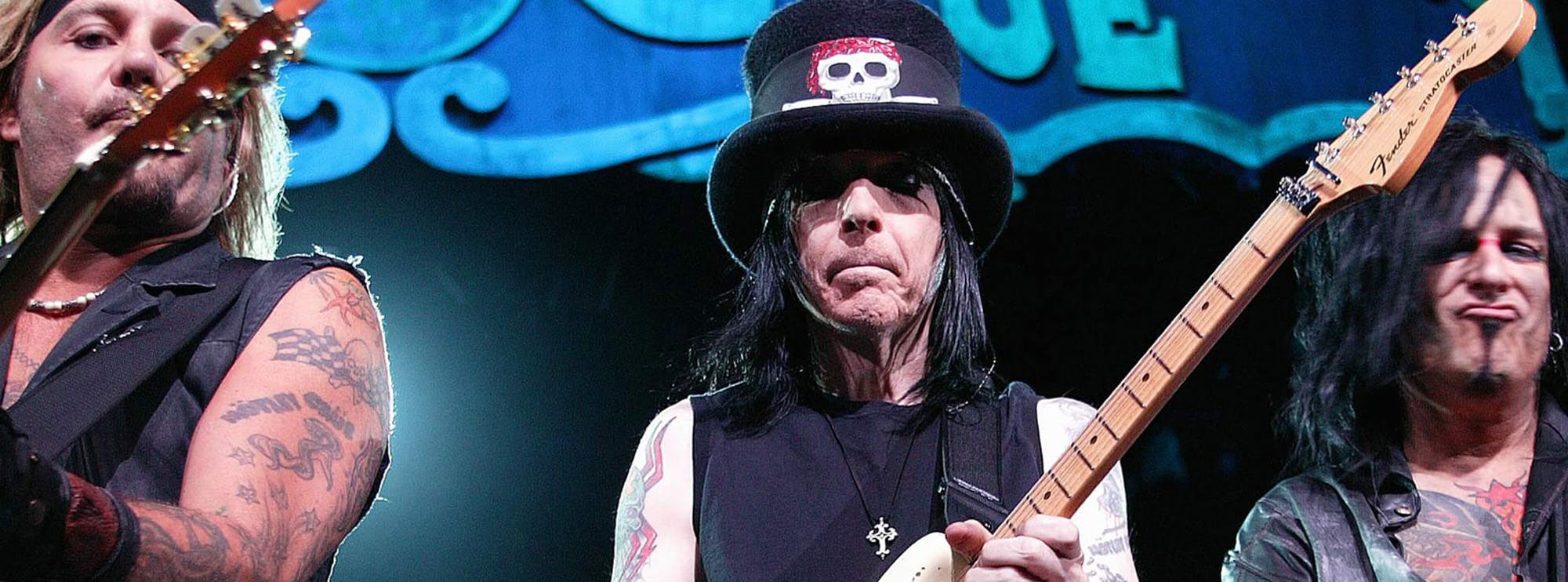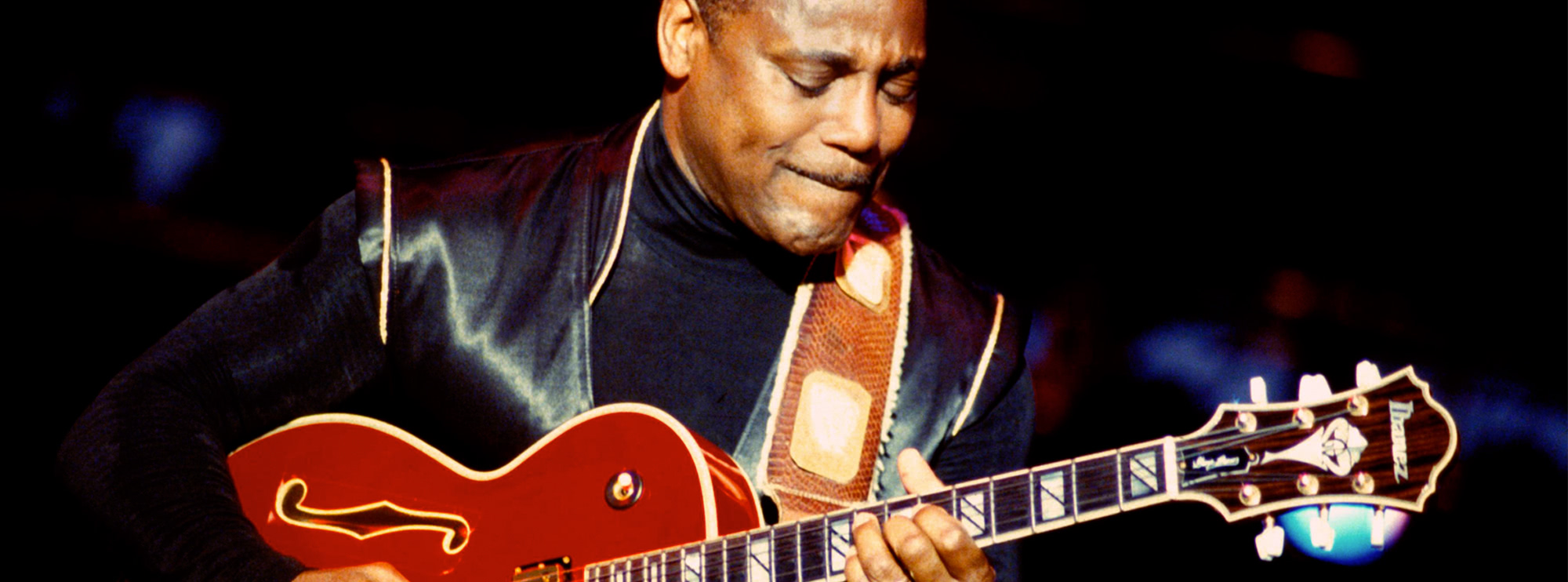"Pump" by Aerosmith: A Guitarist's Perspective
"Pump" is the tenth studio album by American rock band Aerosmith, released on September 12, 1989. This album is considered one of their finest works and features some of the most memorable guitar work by the legendary duo Joe Perry and Brad Whitford. To date, it is the only Aerosmith album to have three Top 10 singles on the Billboard Hot 100.
In this guitar lesson course, LickLibrary’s Sam Bell walks you through the many highlights of each song from this essential album one phrase at a time, including Joe Perry’s classic guitar parts and lead lines from tracks such as; “Janie’s Got a Gun” “The Other Side,” and the iconic “Love in an Elevator.”In this article, we'll dive into the guitar aspects of each song on the album and the techniques employed by Perry and Whitford throughout.
1. Young Lust
"Young Lust" is a hard-hitting rock song that starts with a heavy power chord riff. The song is based on the E minor pentatonic scale and showcases some great string bending and vibrato by Perry. The solo section features a classic bluesy approach, incorporating double-stops, slides, and hammer-ons.
2. F.I.N.E.
"F.I.N.E." has an infectious riff based on the A Mixolydian mode, and the verses feature syncopated rhythms and staccato palm-muting. The pre-chorus makes use of open-string riffs, while the chorus is driven by more power chords. The solo is a perfect example of Joe Perry's signature style, using pre-bends, bluesy bends, and alternate picking.
3. Love in an Elevator
The opening riff of "Love in an Elevator" is based on the G Mixolydian mode and utilizes hammer-ons and slides to create a catchy melody. The verses feature arpeggiated chord progressions played with a clean tone. The chorus uses power chords and octave melodies to create a powerful, driving sound. The solo section highlights Perry's use of pinched harmonics, legato, and double-stop bends.
4. Monkey on My Back
"Monkey on My Back" is a heavy, riff-based song in the key of E minor. The intro and verses feature a heavy, palm-muted riff, while the chorus showcases galloping rhythms and power chords. The guitar solo in this track is an excellent example of Perry's melodic approach, using the E minor pentatonic scale with slides, hammer-ons, and vibrato to create a memorable and expressive solo.
5. Water Song/Janie's Got a Gun
"Janie's Got a Gun" is a haunting ballad with an unforgettable riff that uses the Dorian mode. The verses feature clean, arpeggiated chords with an emphasis on finger-picking and chord progressions. The chorus utilizes power chords to build intensity. The solo section showcases Perry's skill with sustain, legato, and pre-bends to create a melodic and emotional solo.
6. Dulcimer Stomp/The Other Side
"The Other Side" is a funky, upbeat track in the key of G Mixolydian. The verses showcase a syncopated, palm-muted riff with occasional double-stops. The chorus utilizes more power chords and octave melodies. The guitar solo is a highlight of the album, featuring tapped harmonics, slides, hammer-ons, and unison bends.
7. My Girl
"My Girl" is a laid-back, bluesy track with a strong emphasis on open-string riffs and power chords. The verses are driven by a clean, finger-picked riff, while the chorus uses power chords for a heavier sound. The guitar solo is a mix of bluesy licks and melodic phrases, incorporating slides, string bending, and vibrato.
8. Don't Get Mad, Get Even
This track is a blues-rock tune based on the E minor pentatonic scale. The verses feature a driving, palm-muted riff with power chords and barre chords. The chorus showcases a catchy melody using double-stops and slides. The guitar solo in "Don't Get Mad, Get Even" highlights Perry's ability to create memorable solos using slides, hammer-ons, pull-offs, and string bending.
9. Hoodoo/Voodoo Medicine Man
"Hoodoo/Voodoo Medicine Man" is a heavy, groove-based song in the key of E minor. The intro features an eerie, clean guitar riff with arpeggios and chromaticism. The verses showcase a powerful, palm-muted riff with power chords. The chorus is driven by more power chords and syncopated rhythms. The guitar solo incorporates tremolo picking, legato, and dive bombs using a whammy bar.
10. What It Takes
"What It Takes" is a heartfelt ballad in the key of D major. The intro and verses feature a clean, finger-picked arpeggiated chord progression with a touch of hammer-ons. The chorus utilizes power chords and barre chords for a fuller sound. The guitar solo is one of the most melodic on the album, using the D major pentatonic scale with slides, string bending, and vibrato to create an emotional and memorable solo.
Conclusion
"Pump" by Aerosmith is a testament to the guitar prowess of Joe Perry and Brad Whitford. The album offers a wide range of songs and styles, providing guitarists with an excellent opportunity to study and learn from their techniques. From hard-hitting rock anthems to soulful ballads, "Pump" showcases the incredible versatility and skill of Aerosmith's guitarists. Whether you're a seasoned guitarist or just starting, there's plenty to learn and appreciate from this iconic album.
NB: PERFORMANCE FOOTAGE NOT INCLUDED WITH THIS COURSE
Guitar Techniques Used in "Pump"
Throughout the "Pump" album, Joe Perry and Brad Whitford demonstrate a variety of guitar techniques, showcasing their diverse playing styles and incredible skill. Here is a list of some of the techniques used, with links to more detailed explanations:
- Vibrato
- Alternate Picking
- Legato
- Tapped Harmonics
- Double-Stop Bends
- Unison Bends
- Pinched Harmonics
- Slides
- Hammer-Ons
- Pull-Offs
- Power Chords
- Palm Muting
- Barre Chords
- Finger-Picking
- String Bending
- Syncopated Rhythms
- Open-String Riffs
- Whammy Bar Tricks
- Bluesy Bends
- Octave Melodies
- Galloping Rhythms
- Arpeggiated Chord Progressions
- Chromaticism

About The Tutor
Tutor Profile
Sam Bell
Sam Bell has been playing guitar from the age of 4, since then he has played many styles from Funky Blues to screaming Metal/Fusion on 8 string guitar. A member of UK tech metal band ‘Mask of Judas’, he is also currently writing his own solo instrumental album. He also...




